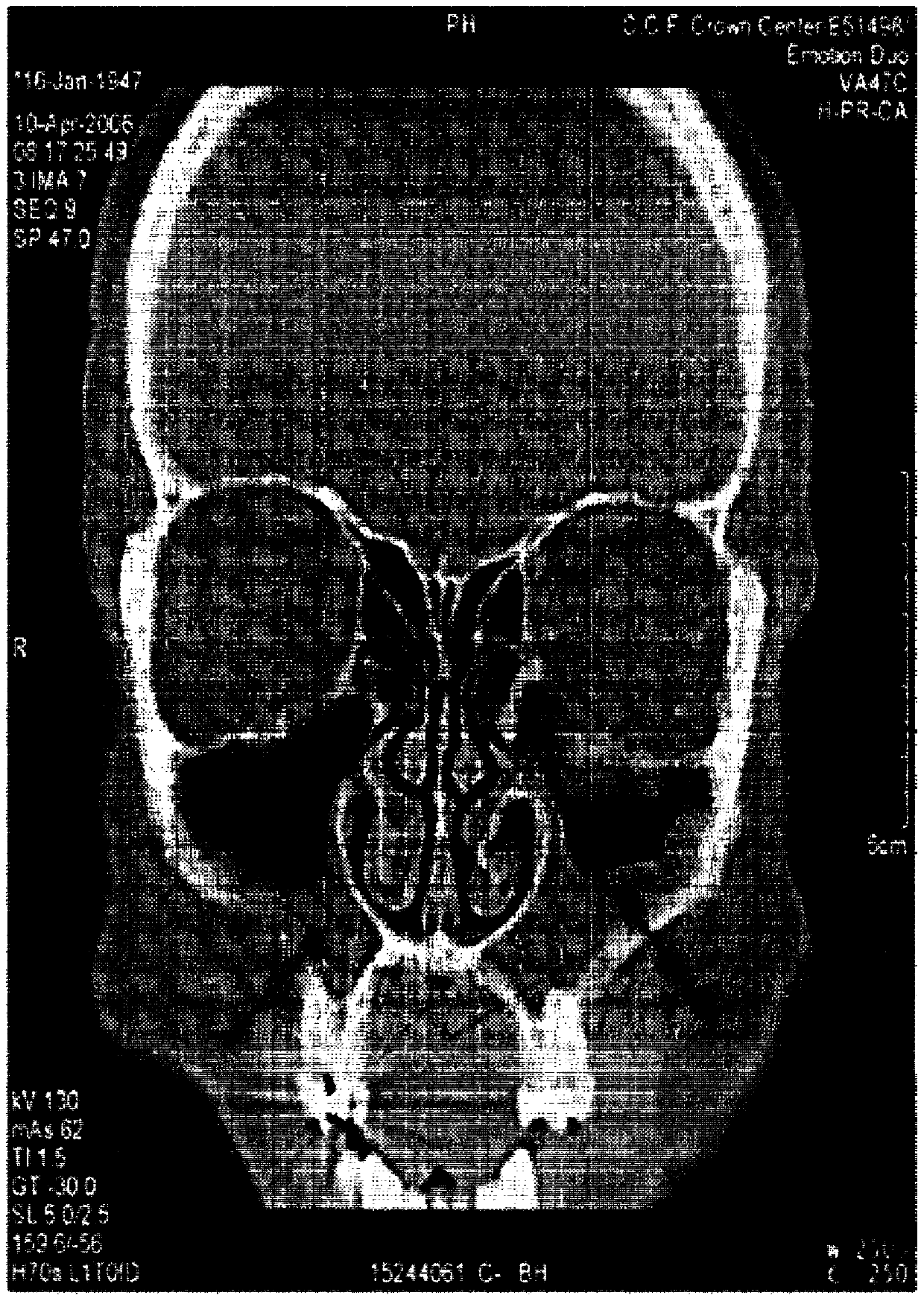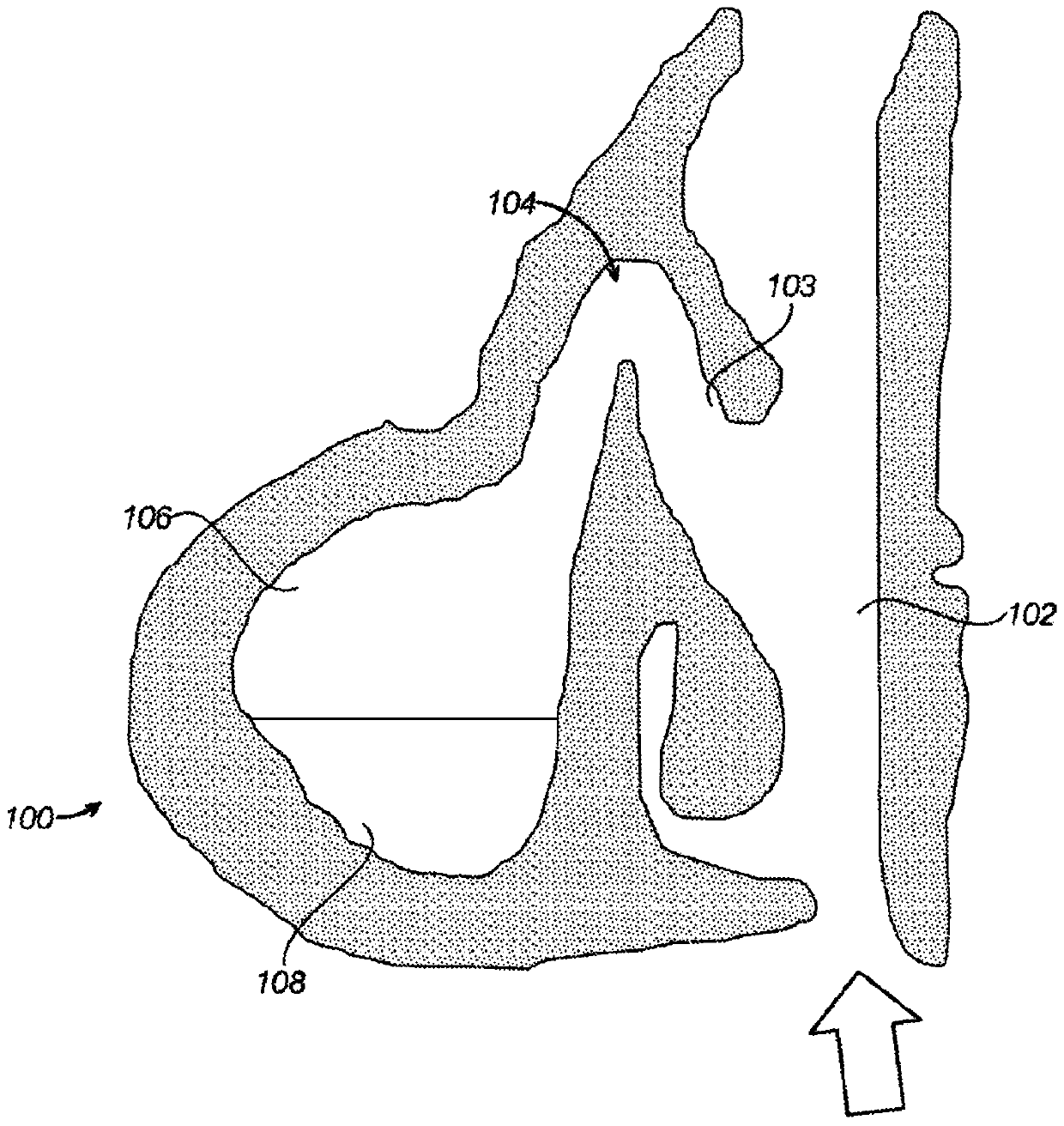Devices and methods for diagnosis of sinusitis
A hand-held device, nostril technology, applied in the direction of biochemical equipment and methods, diagnosis, measurement devices, etc., can solve the problem that the patient cannot be fully guided
- Summary
- Abstract
- Description
- Claims
- Application Information
AI Technical Summary
Problems solved by technology
Method used
Image
Examples
example 1
[0184] Example 1 (Lysis Buffer)
[0185] Such as Figure 27 As indicated, different lysis buffers were tested to determine the time to successfully lyse cells corresponding to Haemophilus influenzae (H.flu), Moraxella catarrhalis (M.cat) and Streptococcus pneumoniae (S.pneumo). Optimal buffer composition. Some potential candidates tested included N-lauroyl sarcosine, Triton X100, sarcosyl, sarcosyl and sucrose, and Bugbuster (Novogen). The effectiveness of each of these buffers was tested using standardized samples of known concentrations of H. influenzae, M. catarrhalis and S. pneumoniae. Based on the lysis data, the sucrose and sarcosyl lysis buffer components appear to be the most efficient at lysing all three cell types. Importantly, many combinations (including combinations that do not contain sarcosyl and sucrose) do not work with all three cell types and, therefore, may not be compatible with combination assays that detect all three cell types.
[0186]Therefore, ...
example 2
[0188] Example 2 (wiping material selection)
[0189] Experiments to test the best swab material for sampling were also performed. Because the area where the sample is to be collected (the subject's nasal and sinus cavities) is a rather sensitive area, it is important to be able to quickly and efficiently collect enough sample material for the assay. Also, it is desirable to sample the subject's nasal and sinus cavities only once, as repeated sampling can result in irritation of the subject's nasal and sinus cavities. Also, any attempt to collect a sample after the first attempt may elicit an autonomic response of excess mucus in the nasal passages, which may dilute the collected sample or blood. While materials such as cotton swabs and gauze can be used, two commercially available swab materials were tested for their ability to obtain samples quickly. Hydraflock, Ultraflock and Purflock were tested for their ability to absorb water, ATS-M (Manual Test Soil) laboratory soi...
example 3
[0191] Example 3: Test method
[0192] After sampling using the device described above for the collection device, insert the swab with the sample into the lysis buffer by fully extending the end of the swab and inserting into the appropriate volume of lysis buffer, as in Figure 26 shown. In this example, the positive end of the swab goes into the tube with the lysis buffer (the swab can be a sample device swab such as Figure 25K shown). The swab can be mixed or agitated in the buffer and removed (eg, after 1-30 seconds). Bacteria can be lysed in the sample buffer by the action of the lysis buffer. See for lysis buffer ( Figure 28 ) and dilution buffer ( Figure 29 ) of the example Figure 28 and Figure 29 . The sample buffer can then be applied directly to the assay, or it can be diluted (e.g. 1:10) in a lysis buffer or a second buffer (dilution buffer, such as Tris buffer), which can aid in wicking on the membrane. 100-200 microliters of sample can then be loa...
PUM
 Login to View More
Login to View More Abstract
Description
Claims
Application Information
 Login to View More
Login to View More - R&D
- Intellectual Property
- Life Sciences
- Materials
- Tech Scout
- Unparalleled Data Quality
- Higher Quality Content
- 60% Fewer Hallucinations
Browse by: Latest US Patents, China's latest patents, Technical Efficacy Thesaurus, Application Domain, Technology Topic, Popular Technical Reports.
© 2025 PatSnap. All rights reserved.Legal|Privacy policy|Modern Slavery Act Transparency Statement|Sitemap|About US| Contact US: help@patsnap.com



